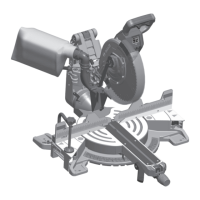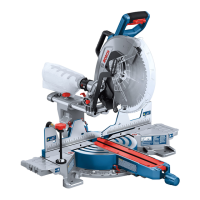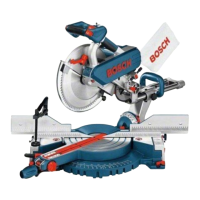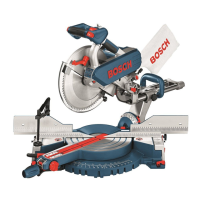40
MAKING AN AUXILIARY FENCE
Certain types of molding need a fence face
extension because of the size and position
of the workpiece. Holes are provided in the
fence to attach an auxiliary fence. The aux-
iliary fence is used with the saw in the 0°
bevel position only.
1. Place a piece of wood against the miter
saw fence (see Fig. 38). Wood can have
a maximum height of 5-1/2" (140mm).
Check that auxiliary fence assembly
does not interfere with head assembly.
See dimension drawing – Fig. 39.
Check for interference
between auxiliary fence
and saw head componenents by perform-
ing a dry run. Fence interference can pre-
vent proper saw operation and cause injury
and/or tool damage.
2. Mark the locations of the support holes
on the wood from the back side of the
fence.
3. Drill and countersink the holes on the
front of the support board.
4. Fasten from front of fence: Attach (each)
auxiliary fence using two (2) 3/16" (M5)
flat head machine screws. With 3/4"
(19mm) auxiliary fence, use 1-1/2"
(38mm) long screws. Secure behind
metal fence with washer and machine
nuts.
Fasten from back of fence: With 3/4"
(19mm) auxiliary fence, use 1/4" (M6)
round head wood screws (3/4"/20mm
long). Drill four pilot holes through aux-
iliary fence and run screws from rear of
metal fence.
Be aware of the path of
the saw blade. Make a
dry run with the saw Off by conducting a
simulated cutting cycle, and observe the
projected path of the saw blade. Keep
hands at least six (6) inches (152mm)
away from the projected path of the saw
blade.
5. Make a full depth cut to create the blade
slot. Check for interference between the
auxiliary fence and the lower blade
guard. Make adjustments as necessary.
6. For best splinter-free cuts, use the chop
cut method.
7. When making slide cuts, the center must
be notched out per pattern (see Fig. 39).
Preparing for Saw Operations

